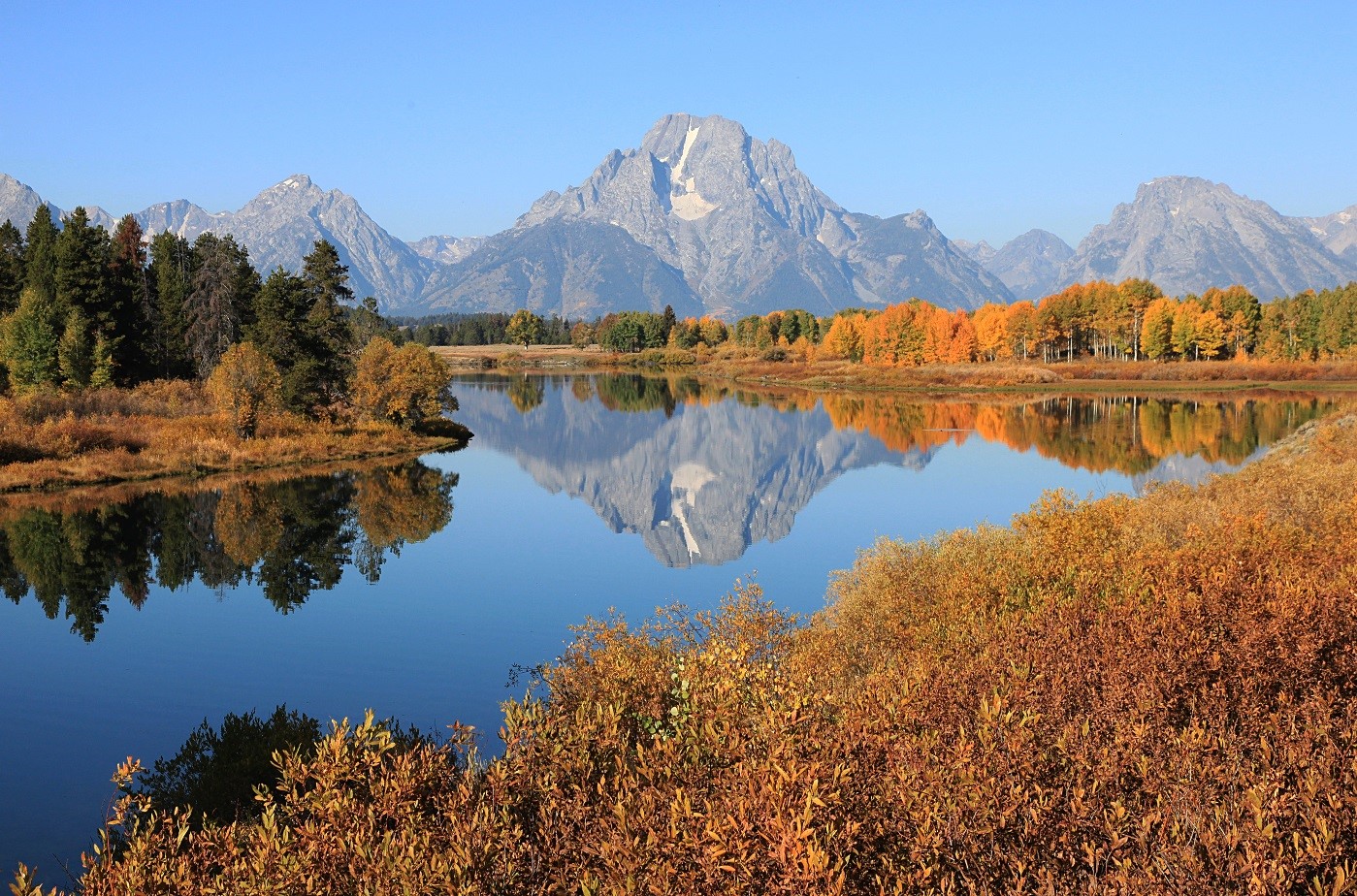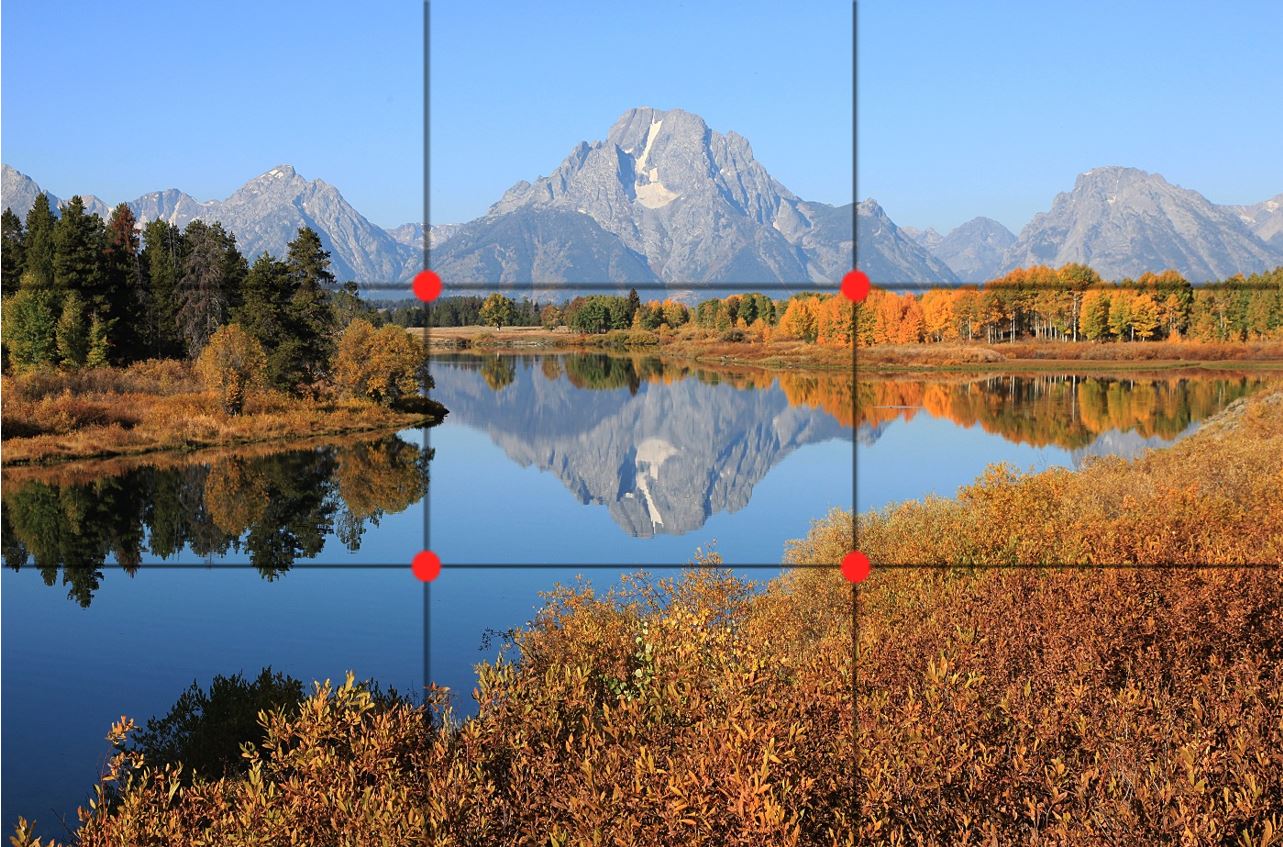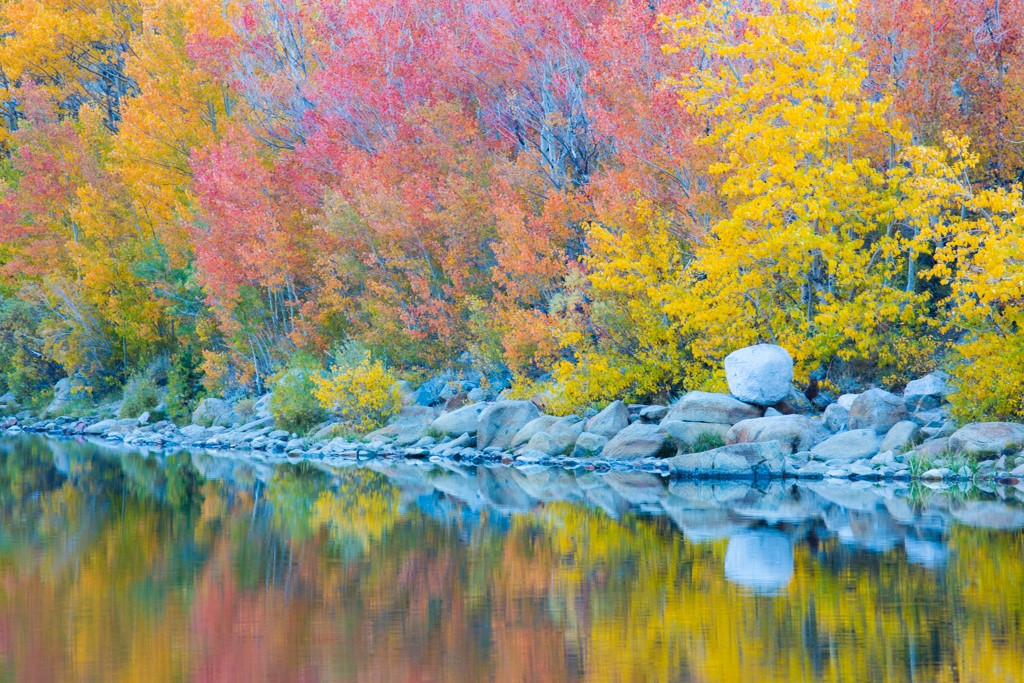
Winner of our First Monthly Challenge – “Capturing the Fall Season”
Wow! I am so excited by the outpouring of entries, and very high quality photos that you all have submitted. You must be reading each and every one of our articles! Kidding, but let me just say once again that there are many fantastic shots submitted and we thank you for participating.
For this inaugural monthly contest, we’d like to showcase our winner, along with an honorable mention. These are both fantastic photos, and I’d love to discuss what I personally like about the technique, artistry, and subtleties of each that make them superb in many ways.
First, the winner – a big congratulations to Marion Jocher for her fantastic shot of The Grand Tetons in The Classic Oxbow Bed Shot.

f/11, 1/350th of a second, ISO 400
There are a lot of things I like about this shot, but the symmetry and lines are perhaps the most prominent aspects that jump out right away. In addition, the proportion of colors, with a gradient of blues in both the sky and reflection, the dark green of trees on the left juxtaposed with the bright orange trees on the right, are exquisite. There is a great contrast in textures, from the rough leaves, smooth sky and water, and sloping steely mountains. Needless to say, there’s a lot going on here, so the organization of each element, and its overall proportion to the scene needed to be balanced – and balanced it is!!
The composition is fantastic, too. If you were to overlay the rule of thirds onto this shot, look at how perfectly that bright patch of trees on the right lines up with the intersecting points on the upper right. The eye is naturally drawn to this area, so positioning a unique element of the photo here is perfect. In addition, it’s an excellent compartmentalization of each third, both vertical and horizontal.

The lake is predominantly in the middle third, with the mountains and sky clearly in the upper third, and then strong foreground elements of the orange, highly textured leaves, in the bottom third. Really, take a moment to look at how nicely organized everything is here – textbook example.
Lastly, just touching quickly on the shot settings, of f/11, 1/350th of a second, and ISO 400. Great choices. F/11 is my personal go-to for a big landscape scene, for it allows for a very wide depth of field – critical when the foreground and background all need to be in focus. While 1/350th of a shutter speed seems fast, it also ensures that you have zero camera shake. Since the photographer was still able to get f/11 at that speed, the faster the better! And ISO 400 is a great go-to ISO for outdoor shots. For those with more intro level cameras, ISO 400 sometimes can be a tad too high, with ISO 200 being preferable. But, with more advanced DSLRs, especially of the full-frame variety, ISO 400 is wonderfully clear and crisp.
Once again, Marion, congrats and great work!!
Again, we received some truly amazing submissions and I can’t help but include an honorable mention for this inaugural challenge.
Congrats to our honorable mention, Beverly Friedman, for her Fall Reflections photo, taken in the Eastern Sierras just after sunrise.

f/16, 0.3 seconds, ISO 800
This shot is simply stunning. It’s perhaps the simplicity juxtaposed with the intensity of color that really gets me. It’s a menagerie of vibrant colors with that strong transition of beautiful boulders, fading into a soft reflection. It also has excellent composition. That one large boulder sticking up on the right is in a great area to draw the eye. Then, the eye follows the line of rock across the photo, showcasing the nice transition of color and texture as you go down the line from right to left. A very unique shot that is at the same time so simple yet very complex.
The shot settings are right where we want them. Because you can tell this follows a shore line going further away from the photographer, a large depth of field is key. Otherwise the left side of the photo could appear blurred. F/16 accomplished that. The shutter speed, while probably being required to be slow, is also a great tactic in and of itself, for it helped to blur the water just slightly, creating that nice soft touch to the photo, amidst strong boulders and intense colors of the leaves. A great sense of balance.
Once again, excellent photo, Beverly, and congratulations!
Thank you all so much for the great submissions, and there are so many others that I would be proud to hang on my wall at home. I greatly look forward to next month’s challenge. Keep an eye out for the new monthly challenge to be posted shortly!
Leave a reply